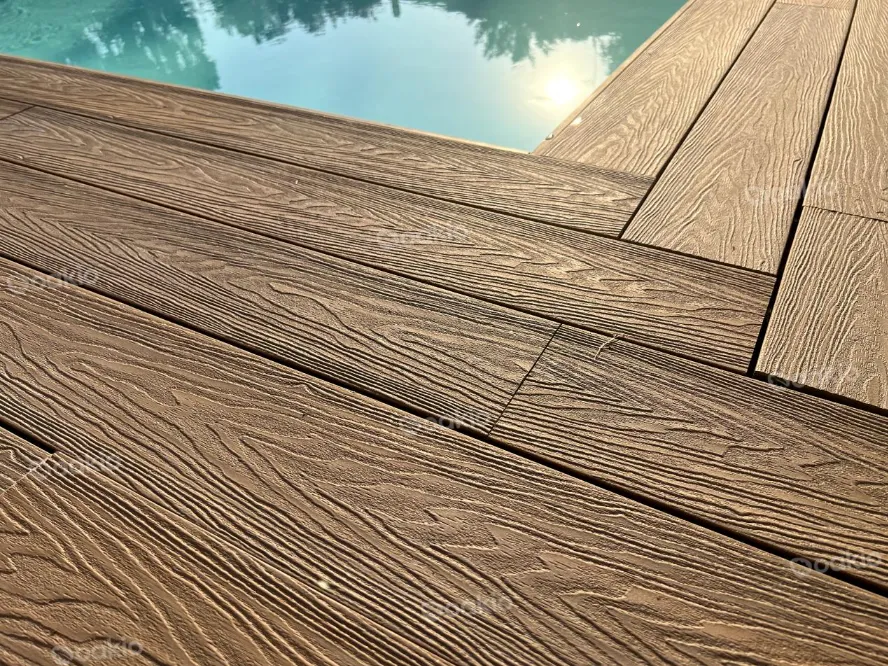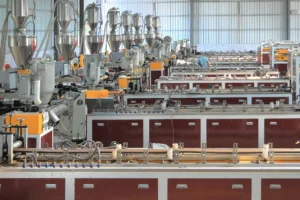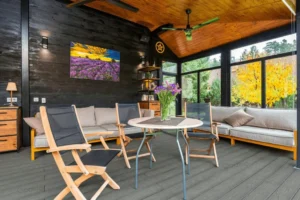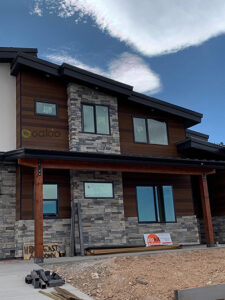Development Directions for Serialized WPC Flooring
Wood-plastic composite (WPC) flooring has become a cornerstone in sustainable construction, praised for its eco-friendly nature and impressive durability. While much research has focused on material preparation and structural stability, critical aspects such as installation techniques, aesthetic design, and systematic evaluation have been less emphasized. To address these gaps and meet the rising demand for sustainable construction materials, the WPC flooring industry must prioritize raw material diversification, serialized design frameworks, and scientific evaluation methods. This approach will not only enhance cost-effectiveness but also position WPC flooring as a leader in energy-efficient and customizable building solutions.

Enhancing Energy Efficiency in WPC Flooring
Energy efficiency is a key attribute of WPC flooring, making it a preferred choice for eco-conscious consumers and builders. As global energy concerns deepen, manufacturers must innovate to produce cost-effective and environmentally sustainable flooring solutions.
One such innovation is the incorporation of mixed recycled plastics with plant fibers. Traditionally, WPC production has relied on single-component thermoplastics such as polypropylene (PP), polyethylene (PE), and polyvinyl chloride (PVC). However, utilizing mixed recycled plastics allows manufacturers to reduce production costs while improving resource efficiency. This approach aligns with circular economy principles, ensuring minimal environmental impact.
Additionally, WPC flooring offers excellent thermal insulation, a feature that enhances energy efficiency in both residential and commercial buildings. By maintaining indoor temperature stability, WPC flooring reduces reliance on heating and cooling systems, contributing to lower energy consumption. Manufacturers are now exploring ways to further improve thermal insulation properties by optimizing the material composition and design of WPC flooring.
Advancements in Manufacturing and Design
- Serialized Design for Market Diversification:
The demand for personalized and aesthetically appealing flooring solutions is growing rapidly. Serialized WPC flooring designs cater to this demand by offering a wide range of patterns, textures, and colors. These designs enable manufacturers to provide flexible combinations that suit diverse consumer preferences while maintaining the efficiency of mass production. Serialized designs also help bridge the gap between functionality and style, making WPC flooring a versatile option for modern interiors. - Innovative Manufacturing Techniques:
The production of WPC flooring has traditionally relied on single-layer extrusion processes. However, as the market evolves, more advanced manufacturing methods are being adopted. Techniques such as multi-layer composite extrusion, steel-WPC co-extrusion, and plastic-WPC co-extrusion are gaining traction. These methods enhance the structural integrity, durability, and aesthetic appeal of WPC flooring.
For instance, multi-layer composite extrusion allows manufacturers to combine multiple layers of materials, each optimized for specific properties such as water resistance, UV protection, and wear resistance. This not only extends the lifespan of WPC flooring but also makes it suitable for high-traffic and outdoor applications. Similarly, steel-WPC and plastic-WPC co-extrusion processes provide additional strength and stability, making WPC flooring a reliable choice for heavy-duty applications.
- Material Diversification for Sustainability:
WPC flooring production has traditionally utilized plant fibers like rice husks, wheat straw, and sugarcane bagasse. These agricultural by-products are abundant and renewable, making them ideal for sustainable manufacturing. However, to further enhance sustainability, the industry is exploring ways to efficiently utilize mixed recycled plastics. This approach reduces dependence on virgin plastics and lowers production costs, ensuring that WPC flooring remains an affordable and eco-friendly option for consumers.
Establishing a Scientific Evaluation Framework
To ensure the long-term growth and success of the WPC flooring industry, it is essential to establish a robust evaluation framework. This includes:
- Standardized Installation Guidelines:
Despite its growing popularity, WPC flooring lacks dedicated installation standards tailored to its unique properties. Many manufacturers currently rely on guidelines for other materials, such as vinyl or laminate flooring. However, as a hybrid material, WPC flooring requires specialized standards to ensure proper installation and maintenance. Establishing these guidelines will improve product performance and customer satisfaction. - Quantitative Aesthetic Evaluation:
The aesthetic appeal of WPC flooring is a major selling point, but evaluating design quality often relies on subjective opinions. To address this, the industry must adopt quantitative evaluation methods that measure visual elements such as color harmony, texture, and pattern consistency. By developing clear metrics and evaluation frameworks, manufacturers can create designs that are not only visually appealing but also scientifically validated. - Comprehensive Product Testing:
Scientific evaluation of WPC flooring must also include rigorous testing of its physical and mechanical properties. This includes assessments of water resistance, UV stability, and thermal insulation performance. By conducting thorough testing, manufacturers can identify areas for improvement and ensure that their products meet the highest quality standards.
Applications and Market Potential of WPC Flooring
WPC flooring is highly versatile and can be used in a wide range of applications, from residential interiors to commercial spaces and outdoor installations. Its resistance to water and weathering makes it ideal for areas prone to moisture, such as kitchens, bathrooms, and pool decks. In addition, the aesthetic versatility of WPC flooring allows it to complement various architectural styles, from modern minimalism to rustic designs.
The market potential for WPC flooring is immense, driven by increasing consumer demand for eco-friendly and low-maintenance building materials. Governments and organizations around the world are also promoting the use of sustainable materials, providing further opportunities for growth in the WPC flooring industry.
Conclusion
The future of WPC flooring lies in innovation, sustainability, and customization. By embracing advanced manufacturing techniques, diversifying raw materials, and establishing scientific evaluation frameworks, the industry can meet the growing demand for eco-friendly and energy-efficient flooring solutions. Whether for residential, commercial, or outdoor applications, WPC flooring offers a unique combination of functionality and aesthetic appeal. Explore Oakio’s range of sustainable WPC products and take the first step toward creating beautiful, eco-friendly spaces that stand the test of time.
Trending Reading
What Are the Differences Between the WPC Board and PVC Board?
[2024 Update] How Long Does WPC Decking Last?











